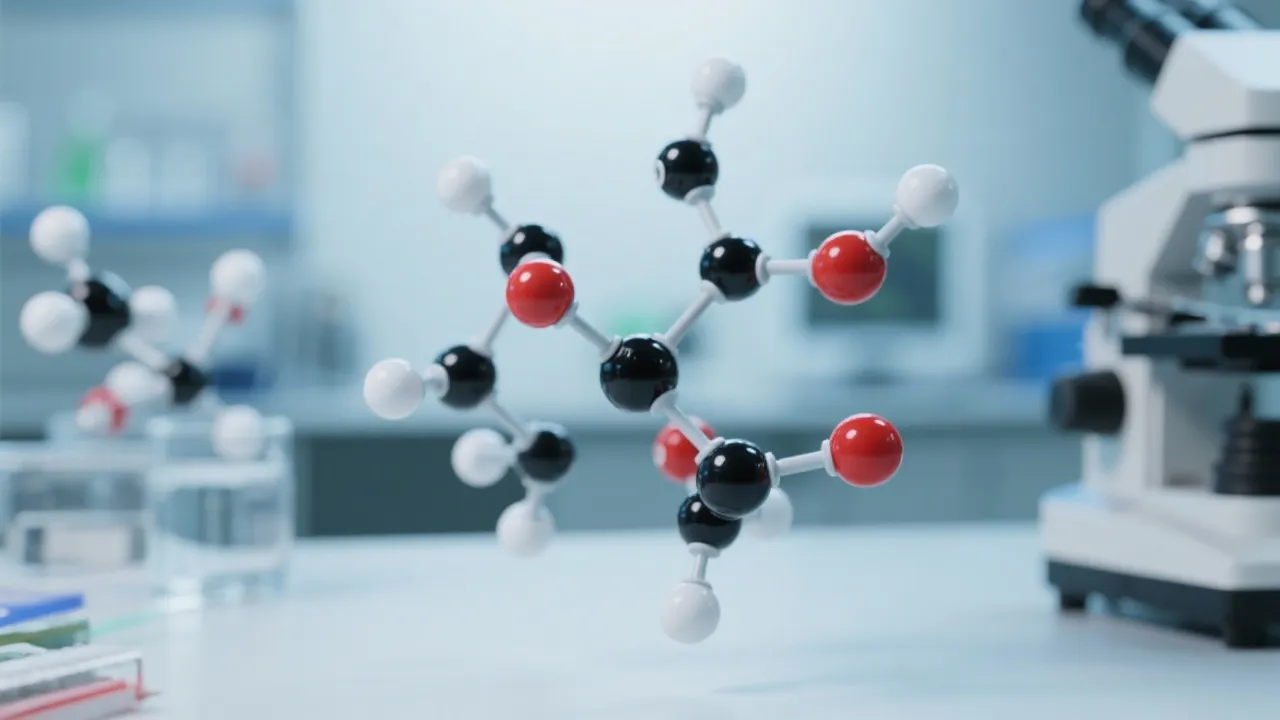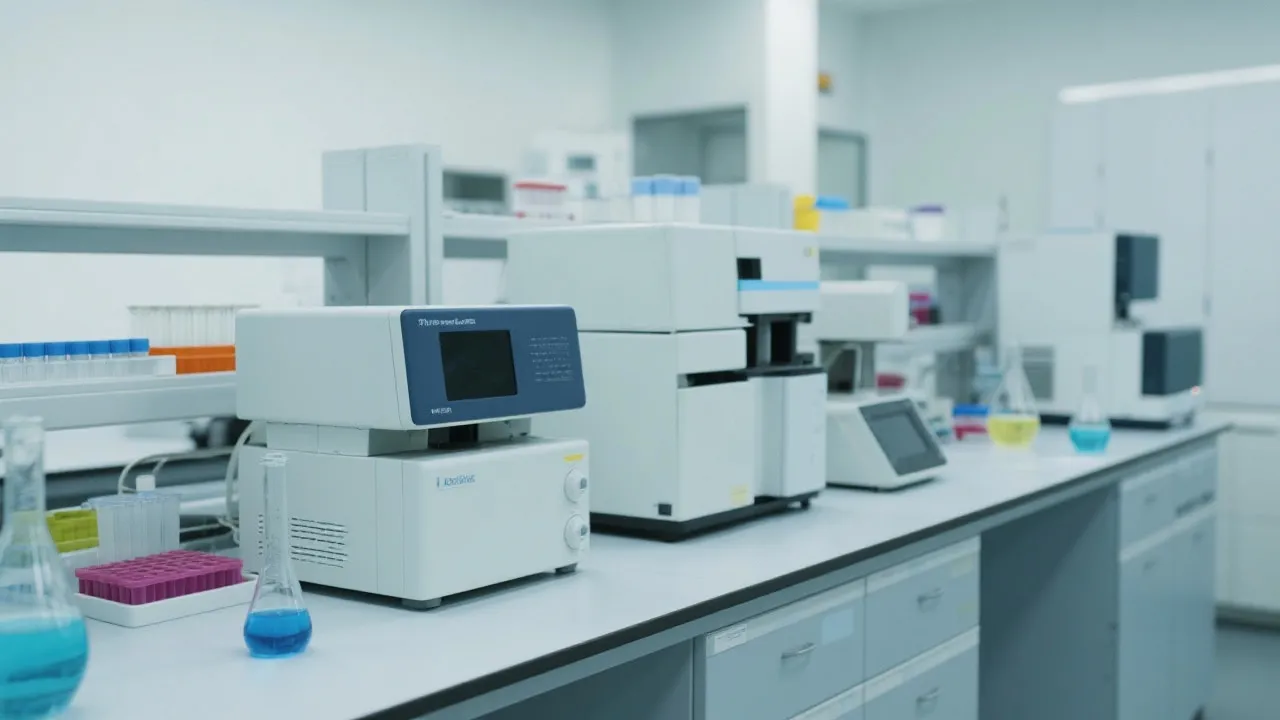Unlocking the Potential of Alox15 Inhibitors
The exploration of Alox15 inhibitors represents a significant advancement in pharmacology and medicine. Alox15, an enzyme intimately linked with inflammation and various diseases, has become a focal point in drug development. By deftly targeting this enzyme, these inhibitors showcase promise in treating conditions such as asthma, cardiovascular diseases, and certain cancers. This article delves into the potential and challenges of Alox15 inhibitors, offering an authoritative overview of their scientific and therapeutic implications.

Understanding Alox15 and Its Role in Physiology
Arachidonate 15-lipoxygenase (Alox15) is an enzyme playing a pivotal role in the metabolic pathway of arachidonic acid, influencing processes like inflammation and oxidation. This enzyme is particularly notable for its contribution to the conversion of arachidonic acid to various bioactive lipid mediators, which are involved in vital physiological functions. By catalyzing the incorporation of oxygen into arachidonic acid, Alox15 produces hydroxyeicosatetraenoic acids (HETEs) and other metabolites that regulate a multitude of cellular responses.
The significance of Alox15 spans beyond mere biochemical conversions; it encompasses intricate networks of cellular communication affecting physiological and pathological processes. The lipid mediators generated by Alox15 are known to modulate vascular tone, platelet aggregation, and immune cell recruitment—factors critical to the body’s response to injury and disease. Understanding the nuances of Alox15's functioning is therefore essential for uncovering its implications in various diseases, including atherosclerosis, asthma, and cancer, which are characterized by inflammation and oxidative stress. Recent research has highlighted the potential of Alox15 inhibitors as a therapeutic solution by thwarting the enzyme's overactivity, thereby unlocking new pathways for treatment.
The Therapeutic Promise of Alox15 Inhibitors
Alox15 inhibitors have garnered attention in the medical field due to their prospective capabilities in managing various inflammatory and oxidative stress-related conditions. These inhibitors function by specifically targeting the Alox15 enzyme, effectively modulating the production of inflammasomes and lipid mediators that exacerbate inflammatory pathways. By significantly reducing inflammation, Alox15 inhibitors emerge as viable candidates in treating chronic asthma and other pulmonary conditions where inflammation plays a pronounced role. In asthma management, the persistent inflammation leads to airway hyperreactivity and remodeling; hence, Alox15 inhibitors can help mitigate these effects and improve lung function.
Furthermore, Alox15 inhibitors hold exceptional promise in cardiovascular therapeutics by mitigating the oxidative modification of low-density lipoprotein (LDL)—a crucial factor in developing atherosclerosis. The role of oxidized LDL in plaque formation within arteries leads to atherosclerosis, a condition responsible for numerous cardiovascular diseases. By preventing this oxidation through Alox15 inhibition, it is plausible to retard the progression of atherosclerosis and improve cardiovascular health significantly. Research into Alox15’s role in various pathways has ultimately positioned Alox15 inhibitors as a transformative approach to treating conditions traditionally managed through broader anti-inflammatory strategies with considerable side effects.
Progress and Challenges in Drug Development
Despite the exciting potential of Alox15 inhibitors, the associated drug development journey poses considerable challenges. While recent studies indicate success in preclinical trials, researchers face significant hurdles that must be surmounted before these agents reach the clinic. One of the primary challenges is achieving selective targeting. The complexity of lipoxygenases and the redundancy in their pathways necessitate that inhibitors used in therapies must not only inhibit Alox15 but also spare other lipoxygenase enzymes that can generate beneficial metabolites. Achieving this selectivity is crucial to maximize therapeutic benefits while minimizing adverse effects.
Another critical hurdle is bioavailability, which refers to the degree and rate at which an active ingredient or active moiety is absorbed and becomes available at the site of action. Many potent compounds may exhibit low bioavailability due to poor solubility or rapid metabolic degradation. Formulating Alox15 inhibitors that retain potency while ensuring adequate systemic circulation is vital for their effectiveness as therapeutic agents. Minimizing off-target effects—wherein an inhibitor may affect multiple biological pathways unintendedly—remains a primary consideration in the design of Alox15 inhibitors. To minimize adverse outcomes related to such off-target effects, comprehensive in vitro and in vivo testing phases have become a standard component of drug development. Researchers are rigorously testing a variety of Alox15 inhibitors to optimize efficacy and safety in future therapies, continually refining molecular properties to improve their clinical potential. Successful development could revolutionize treatment protocols for diseases currently managed by broad-spectrum anti-inflammatory drugs that often come with numerous side effects.
Comparison of Prominent Alox15 Inhibitors
| Inhibitor | Description | Stage of Research |
|---|---|---|
| PD146176 | A small molecule inhibitor showing promising results in reducing inflammatory markers in preclinical settings. Its specific mode of action targets the catalytic site of Alox15, thereby preventing substrate binding and modifying lipid mediator production. | Preclinical |
| ML351 | This compound is noteworthy for its selectivity and potency. From various studies, ML351 has demonstrated a capacity to suppress inflammatory responses in vitro and in vivo, with potential application in asthma management. Initial pharmacokinetic studies have shown that it passes the blood-brain barrier, indicating a range of possible therapeutic uses. | Preclinical |
| Zileuton | Originally approved for the treatment of asthma, Zileuton inhibits 5-lipoxygenase and demonstrates effects on Alox15 pathways. Current research is investigating its multi-faceted roles, assessing its potential for broader anti-inflammatory applications beyond asthma. | Clinical Trials |
Implications for Future Research
The investigation into Alox15 inhibitors is a burgeoning field with substantial implications for future pharmacological advancements. The enzyme's diverse role in physiological and pathological processes makes it a strategic target for drug development. Ongoing studies are focusing not only on the efficacy of inhibitors but also on the molecular mechanisms pertaining to Alox15 functions. Continual advancements in molecular biology and pharmacology can enhance our understanding and lead to the discovery of novel inhibitors that can be tailored to specific diseases.
Moreover, continued research will shed light on the broader implications of Alox15 beyond acute inflammation. Studies have suggested a potential role for Alox15 in neurodegenerative conditions, wherein oxidative stress plays a prominent role. This evolving understanding hints at Alox15's potential as a target for treating a range of maladies, from arthritis to neurodegenerative diseases, and even metabolic syndromes that align with oxidative stress. As researchers delve deeper, the insights gained can help tailor precision medicine approaches for patients, taking into account individual genetic backgrounds and disease phenotypes. Thus, Alox15 inhibitors might not only transform the therapeutic landscape for patients with chronic inflammatory conditions but also catalyze advancements in personalized healthcare paradigms.
FAQs
Q: What diseases could benefit from Alox15 inhibitors?
A: Diseases such as asthma, atherosclerosis, and certain cancers could potentially benefit from treatment with Alox15 inhibitors due to their anti-inflammatory and antioxidative properties. The application of these inhibitors can extend to other conditions characterized by chronic inflammation, such as rheumatoid arthritis and inflammatory bowel diseases, further expanding their therapeutic horizon.
Q: Are Alox15 inhibitors currently available in the market?
A: As of now, some Alox15 inhibitors are undergoing clinical trials, but widespread availability is dependent on the outcomes of ongoing research and regulatory approval processes. While initial results are promising, the time frame for these agents to enter the market is contingent upon achieving defined efficacy and safety benchmarks set by regulatory bodies.
Q: What are the challenges in developing Alox15 inhibitors?
A: Major challenges in the development of Alox15 inhibitors include achieving selective targeting, ensuring bioavailability while minimizing potential off-target effects, and establishing safety and tolerability in diverse patient populations. The complexity of inflammatory cascades necessitates extensive testing to ascertain the inhibitors' role in not just blocking Alox15 but also in modulating overall inflammatory responses. Collaboration between chemists, biologists, and clinicians will be paramount in overcoming these challenges.
Q: What future research directions can be pursued regarding Alox15?
A: Future research can delve into the role of Alox15 in various disease states beyond traditional inflammatory diseases, particularly focusing on its relation to oxidative stress and chronic conditions like neurodegeneration. Additional investigations into the synergistic effects of Alox15 inhibitors with existing treatments may provide insights into combination therapies that enhance therapeutic outcomes while minimizing side effects. Moreover, exploring the genetic variability in Alox15 expression among individuals can inform precision medicine initiatives, aligning treatments with patient-specific characteristics.
Q: How do Alox15 inhibitors compare with traditional anti-inflammatory drugs?
A: Alox15 inhibitors offer potential advantages over traditional anti-inflammatory drugs, such as non-steroidal anti-inflammatory drugs (NSAIDs) and corticosteroids, which often have extensive side effects and generalized mechanisms of action. Alox15 inhibitors are designed for specificity, which aims to minimize unintended effects on other pathways, potentially reducing the associated risks while enhancing therapeutic efficacy in chronic inflammatory conditions.
Overall, the field surrounding Alox15 and its inhibitors is rapidly evolving. Continuous developments in understanding the underlying mechanisms of this enzyme and strategic formulation of its inhibitors could lead to groundbreaking research that shifts the paradigms of treatment for various complex diseases. With an interdisciplinary approach, the goal is to translate these scientific advancements into tangible clinical applications, ensuring significant progress in improving patient outcomes worldwide.





